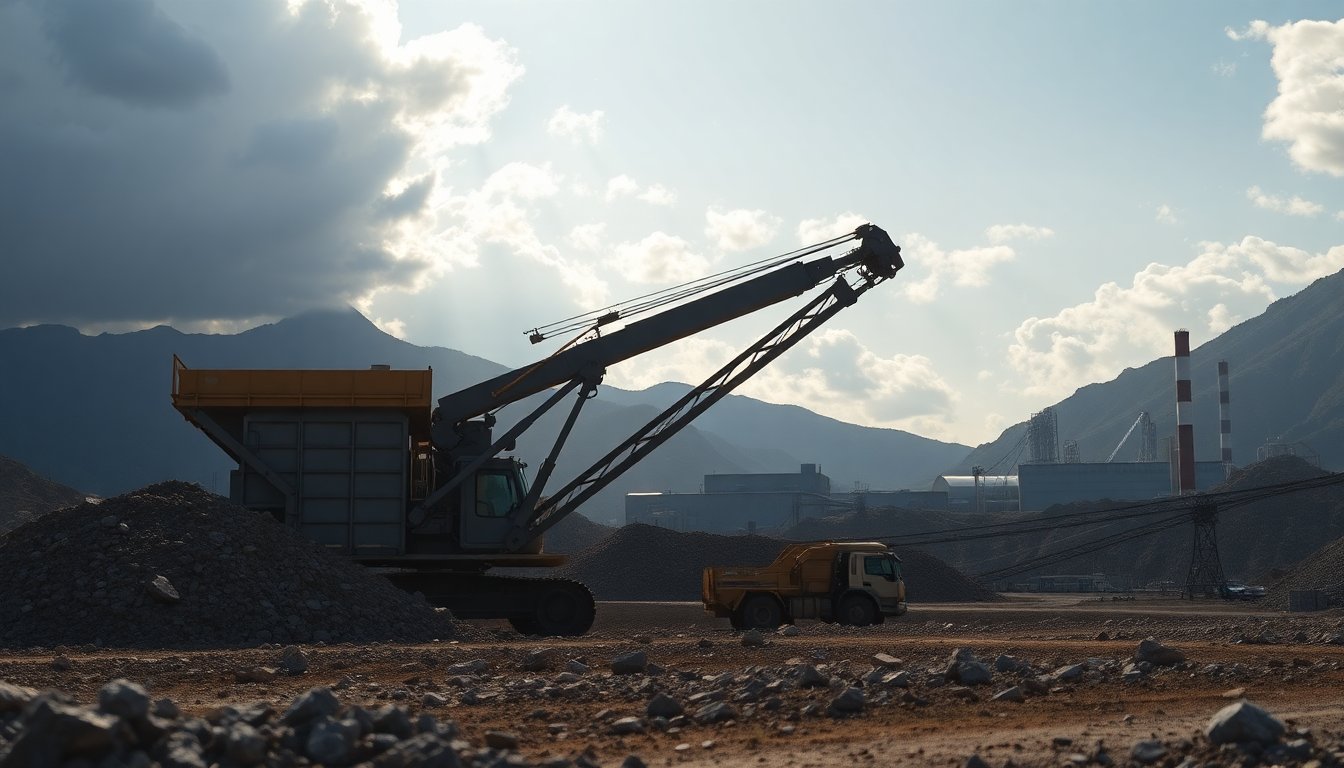Table of Contents
Shifting dynamics in the rare earth minerals market
The global landscape of rare earth minerals is facing increased scrutiny as countries, especially the United States and its allies, strive to reduce their dependence on China. Recent actions from Beijing to potentially limit the export of these essential minerals have heightened the urgency to create alternative supply chains. Analysts indicate that moving away from China’s long-standing dominance in this sector will not occur quickly; establishing a strong, independent supply network may require a decade or longer.
Understanding the challenges of supply chain diversification
Countries aiming to reduce their reliance on China face a complex landscape that encompasses the entire lifecycle of magnet production, from mining to processing and manufacturing. This multifaceted strategy demands significant financial investment and strong political will. However, the journey toward self-sufficiency presents numerous challenges, including high capital requirements, a shortage of technical expertise, and pressing environmental concerns.
The evolving demand for rare earth minerals
The demand for rare earth minerals is increasing significantly due to their essential roles in various industries, including smartphones, electric vehicles, and military aircraft. According to Ryan Castilloux, founder of Adamas Intelligence, the United States imports approximately 10,000 tonnes of rare earth magnets annually from China, while Europe’s imports exceed 25,000 tonnes. With demand expected to grow at an exponential rate over the next decade, establishing a robust supply chain is crucial.
International efforts to enhance self-sufficiency
Initiatives aimed at increasing access to rare earth minerals have gained momentum worldwide. The Trump administration actively sought to boost domestic availability through various strategies, including stockpiling resources and accelerating mining projects. Agreements between U.S. companies and foreign governments have been pivotal in securing mineral exports. For instance, a pact was established between U.S. Strategic Metals and the Pakistani military to facilitate mineral exports. Additionally, a recent agreement with Ukraine includes profit-sharing arrangements for future commodity sales.
Collaborative ventures with Australia
U.S. President Donald Trump and Australian Prime Minister Anthony Albanese have finalized an agreement valued at $8.5 billion. This agreement focuses on rare earth projects in Australia. The partnership aims to secure ownership stakes in ventures essential for stabilizing the supply of key minerals such as terbium, yttrium, holmium, and erbium.
Despite Australia’s significant reserves of these minerals, they remain limited compared to China’s extensive resources, which are approximately seven times larger, according to the U.S. Geological Survey.
Global strategies and future outlook
Efforts to achieve self-sufficiency extend beyond the United States. The European Union has implemented the Critical Raw Materials Act, setting ambitious targets for reducing imports. The EU aims for 40% of its annual rare earth consumption to be processed within the bloc by 2030. Recent developments include the inauguration of a rare earth magnet facility in Estonia and the expansion of a processing plant in France. These actions indicate a strong commitment to bolstering local capabilities.
Asian nations, particularly India and Japan, are investing in initiatives to enhance their domestic supply of rare earths. This move reflects a growing recognition of the need to reduce reliance on China. However, experts warn that despite strong political will and financial support, the timeline for these projects may be extensive. The complexities involved in securing the necessary permitting, financing, and technical expertise suggest that significant progress could take decades.
The implications of China’s dominance
China holds a significant position in the rare earth supply chain, controlling about 70% of mining operations and an impressive 90% of processing, according to the Center for Strategic and International Studies. This dominance stems from decades of strategic investment, enabling China to establish comprehensive supply chains that cover everything from raw mineral extraction to the manufacturing of refined products. As Beijing implements stricter export regulations that require foreign entities to secure licenses for rare earth exports, the urgency for other nations to develop their own supply chains intensifies.
The ambition to reduce dependence on China’s rare earth supplies is evident, yet the journey is challenging. Experts indicate that achieving this goal will require significant financial investment and a sustained commitment to technological and industrial advancements. As countries strive to diversify their mineral supply chains, competition with China is expected to persist, fundamentally altering the global economic landscape for the foreseeable future.


